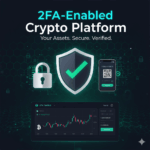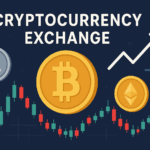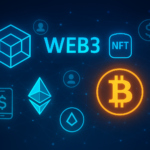Decentralized finance represents one of cryptocurrency’s most transformative applications. Stablecoins now power $46 trillion in annual transactions, rivaling Visa and PayPal, demonstrating DeFi’s real-world utility. For entrepreneurs and businesses, DeFi platform development offers opportunities to participate in this financial revolution.
What Is DeFi Platform Development?
Decentralized finance removes intermediaries from financial services through blockchain technology and smart contracts. DeFi platforms provide lending, borrowing, trading, insurance, and asset management without traditional banks or financial institutions.
Users maintain custody of their assets while accessing financial services through decentralized applications. This architecture reduces costs, increases accessibility, and operates 24/7 without geographic restrictions or institutional gatekeepers.
Core DeFi Platform Types
Decentralized Exchanges (DEX)
DEX platforms enable peer-to-peer cryptocurrency trading without centralized custody. Automated market makers using liquidity pools replace traditional order books. Users trade directly from their wallets maintaining full asset control.
DEX aggregators source liquidity from different decentralized exchanges and provide optimum trading conditions for traders to execute trades. This innovation addresses liquidity challenges that previously limited DEX adoption.
Lending and Borrowing Protocols
DeFi lending platforms connect lenders earning interest on idle crypto assets with borrowers seeking liquidity. Smart contracts automatically manage collateral requirements, interest calculations, and liquidations without human intervention.
Over-collateralization protects lenders from default risks. Borrowers deposit crypto assets worth more than borrowed amounts, with automatic liquidation if collateral values drop below required thresholds.
Yield Farming Platforms
Yield farming allows users to earn returns by providing liquidity to DeFi protocols. These platforms distribute governance tokens, trading fees, and other rewards to liquidity providers. Complex strategies involving multiple protocols maximize returns through automated compounding.
Stablecoin Platforms
Stablecoin transactions reached $23 trillion for USDT and USDC combined in 2024, representing a 90% increase from 2023. Algorithmic stablecoins maintain price stability through smart contract mechanisms rather than centralized reserves.
Asset Management Platforms
DeFi asset management platforms provide index funds, automated portfolio rebalancing, and investment strategies without traditional fund managers. Smart contracts execute strategies transparently with all transactions visible on-chain.
Essential Technical Components
Smart Contract Architecture
Robust smart contract development forms the foundation of every DeFi platform. These contracts handle financial logic, user interactions, security controls, and administrative functions. Solidity remains the dominant language for Ethereum-based DeFi, while Rust powers Solana ecosystem development.
Modular contract design allows upgrades and improvements without disrupting existing functionality. Proxy patterns and upgradeable contracts enable bug fixes and feature additions after deployment.
Oracle Integration
DeFi platforms require real-world data like asset prices, interest rates, and exchange rates. Blockchain oracles provide this external data to smart contracts. Chainlink, Band Protocol, and Pyth Network offer decentralized oracle solutions reducing single points of failure.
Price feed accuracy and manipulation resistance protect platforms from economic attacks. Multi-source aggregation and outlier detection ensure reliable data feeds.
Wallet Connectivity
Seamless wallet integration allows users to interact with your DeFi platform without compromising asset custody. Support major wallets including MetaMask, WalletConnect, Ledger, and Trezor hardware wallets for security-conscious users.
Clear transaction previews showing gas fees, expected outcomes, and potential risks help users make informed decisions before confirming operations.
Liquidity Management
Sufficient liquidity ensures users can execute trades and withdrawals efficiently. Bootstrap initial liquidity through platform treasury allocations, partnerships with market makers, or incentive programs rewarding early liquidity providers.
Automated market maker algorithms like constant product, constant sum, or hybrid models determine how liquidity pools function. Each formula creates different trading dynamics and price curves.
Development Strategies
Building from Scratch
Custom DeFi development provides complete control over functionality, user experience, and economic models. This approach suits innovative concepts requiring unique mechanisms not available in existing protocols.
Expect $100,000 to $500,000 investment with 6 to 12 month timelines for comprehensive platforms. Costs vary based on protocol complexity, blockchain selection, and security requirements.
Forking Existing Protocols
Many successful DeFi protocols are open-source allowing developers to fork codebases and customize for specific use cases. Forking established protocols like Uniswap, Aave, or Compound provides tested code reducing development time and security risks.
This approach costs $30,000 to $150,000 depending on customization requirements. Development timelines compress to 2 to 4 months since core functionality already exists.
White Label DeFi Solutions
White label DeFi platforms offer ready-to-deploy solutions with customization options. These turnkey platforms include frontend interfaces, smart contracts, administrative dashboards, and deployment support.
Costs range from $20,000 to $100,000 with deployment possible in 3 to 8 weeks. This approach suits businesses entering DeFi markets quickly without extensive blockchain expertise.
Security Imperatives
Comprehensive Audits
Security breaches and scams create notorious risks in cryptocurrency. Development companies embedding security into platform DNA dominate 2025. Professional smart contract audits identify vulnerabilities before deployment.
Multiple audits from different firms provide layered security review. Budget $20,000 to $100,000 for thorough auditing depending on protocol complexity and audit firm reputation.
Bug Bounty Programs
Ongoing security requires continuous vigilance. Bug bounty programs incentivize security researchers to identify vulnerabilities responsibly. Platforms like Immunefi and HackerOne facilitate bounty programs with standardized processes and reward structures.
Reward severity-based payouts encouraging disclosure of critical vulnerabilities before exploitation. Successful bounty programs create security partnerships with white-hat hacker communities.
Emergency Response Plans
Despite precautions, security incidents may occur. Preparation includes pause mechanisms stopping protocol operations during emergencies, insurance coverage protecting users from losses, and clear communication plans maintaining community trust during crises.
Regulatory Navigation
The adoption of new accounting standards under ASC 350-60 requires businesses to measure and report digital assets at fair value, significantly improving transparency. This regulatory clarity helps legitimate DeFi projects operate compliantly.
Countries are establishing clearer policies with standardized KYC and AML rules for crypto trading platforms, clear tax guidelines, and licensing frameworks. DeFi platforms must balance decentralization principles with regulatory requirements in operating jurisdictions.
Geographic restrictions, KYC for certain services, and compliance consultations with crypto-specialized attorneys help navigate evolving regulations without compromising project vision.
Tokenomics and Governance
Utility Tokens
Platform tokens serve multiple purposes including governance rights, fee discounts, staking rewards, and liquidity mining incentives. Well-designed tokenomics align stakeholder interests with protocol success.
Fair token distribution prevents concentration among early insiders. Vesting schedules, community allocations, and transparent treasury management build trust with users.
Governance Mechanisms
Decentralized governance allows token holders to propose and vote on protocol changes. This distributed decision-making embodies DeFi principles while creating engaged communities invested in platform success.
Implement time-locks requiring delay between proposal approval and execution. This protection allows community reaction if malicious proposals pass unexpectedly.
Marketing and Growth Strategies
The crypto exchange market is expected to expand at 15-20% compound annual growth rate from 2025 to 2030, creating opportunities for innovative DeFi platforms. Strategic marketing distinguishes your platform in competitive markets.
Educational content explaining your protocol’s value proposition, yield sources, and risk factors builds informed user bases. Transparency about smart contract audits, team backgrounds, and treasury management establishes credibility.
Partnerships with established protocols create network effects. Integration with popular wallets, yield aggregators, and DeFi dashboards increases accessibility and exposure.
Ready to launch your DeFi platform? Connect with experienced DeFi developers who combine technical expertise with understanding of decentralized finance economics. With proper planning, security focus, and community engagement, your platform can succeed in the evolving DeFi landscape.
The decentralized finance revolution continues accelerating as blockchain technology matures. Whether building lending protocols, decentralized exchanges, or innovative financial primitives, DeFi platform development offers opportunities to reshape global finance while building sustainable businesses.






















0 Comments